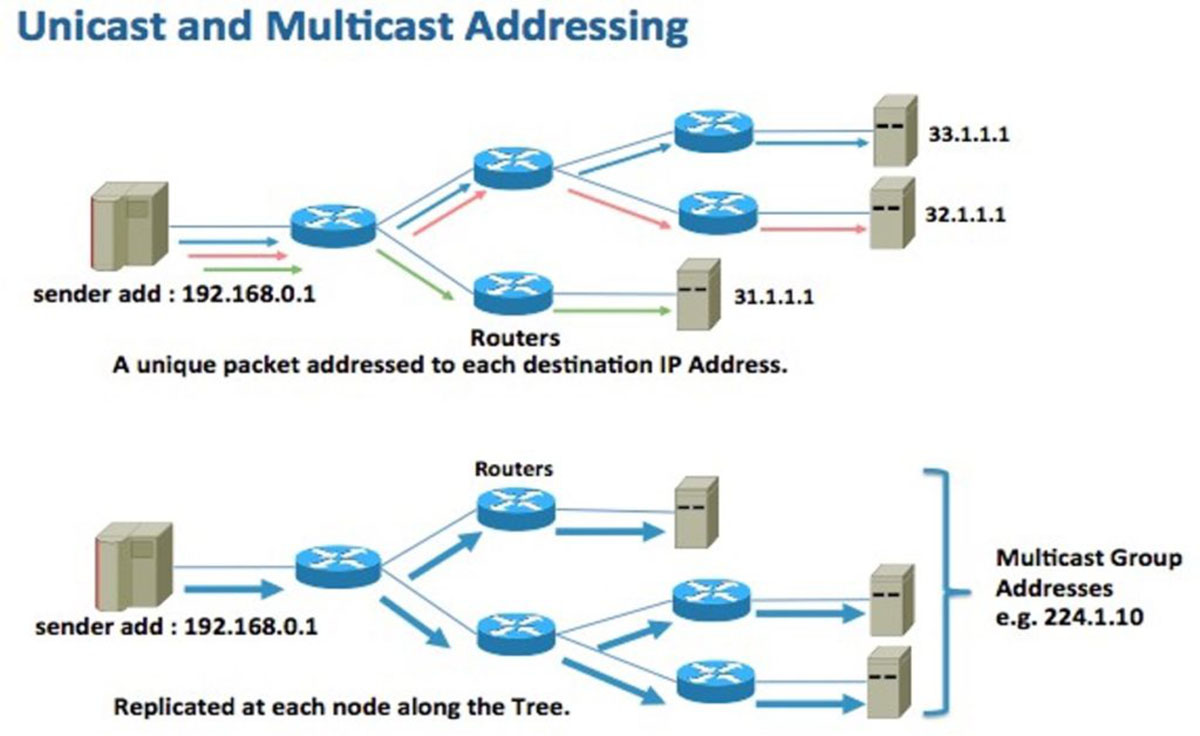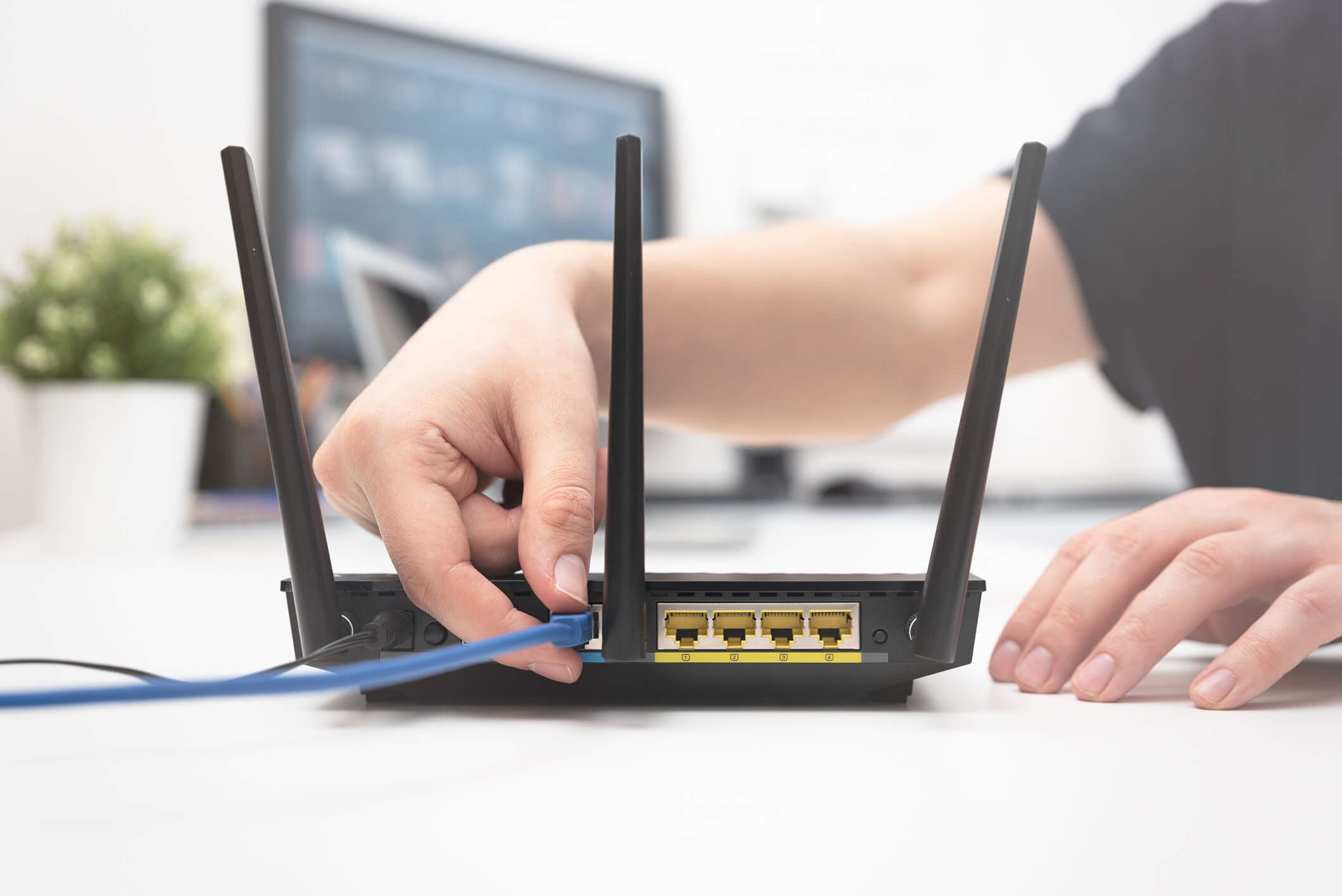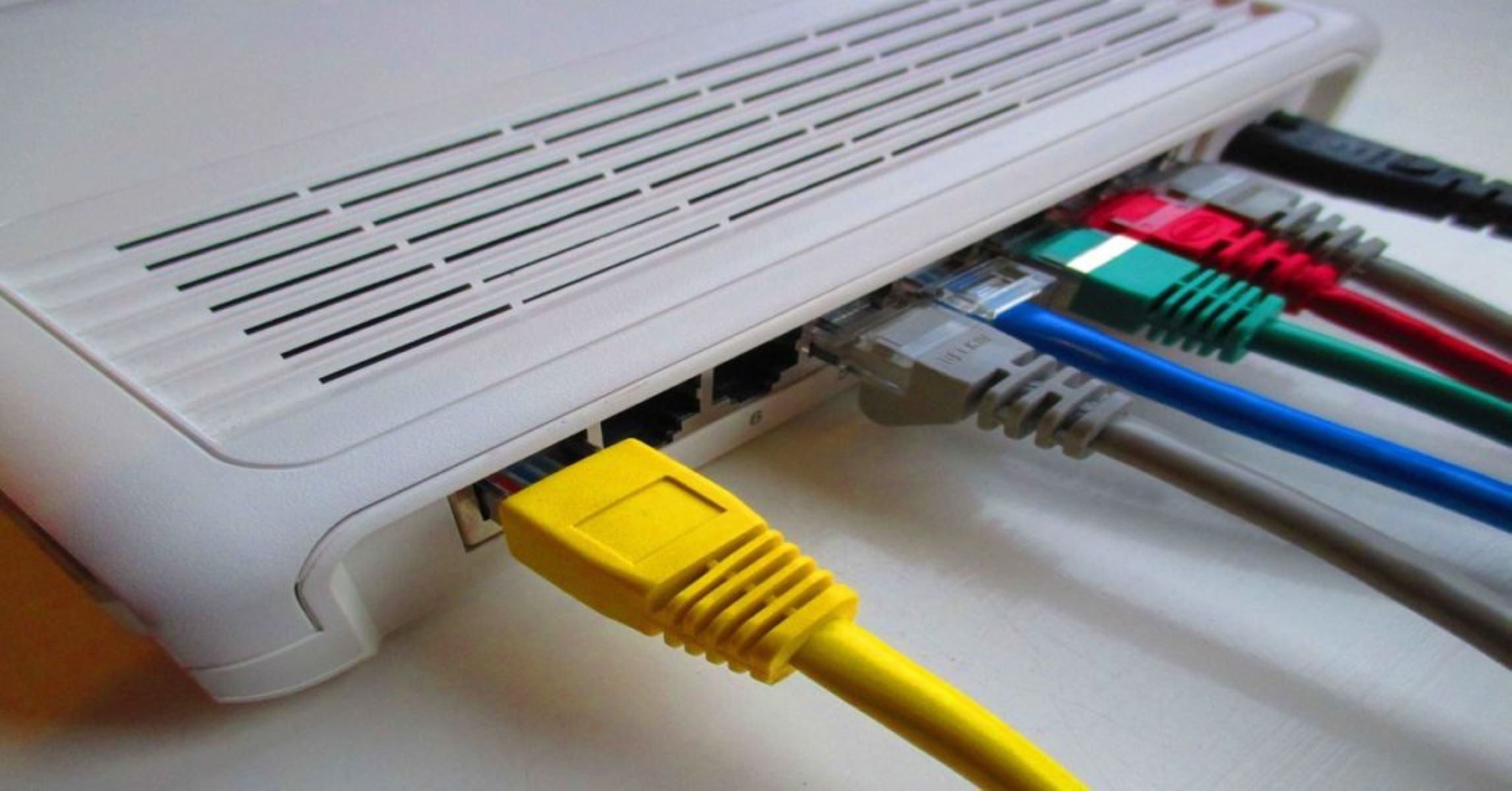What is a Multicast Address
A multicast address is a specific type of IP address that is used in computer networking to send data packets to a group of devices simultaneously. Unlike unicast addresses, which are used to send data to a single device, multicast addresses allow efficient distribution of information to multiple recipients. This makes them particularly useful in applications such as multimedia streaming, online gaming, and content delivery networks.
When a device wants to send data to a multicast group, it can do so by addressing the packet with a unique multicast IP address. The multicast address range is different from the unicast range and is reserved for this purpose. Multicast addresses have a specific format and are identified by a prefix that indicates the address space is reserved for multicast use.
One of the key advantages of using multicast addresses is the ability to reduce network traffic and conserve bandwidth. Instead of sending separate copies of data to each device individually, multicast transmissions enable the data to be sent once and received by all interested devices within the multicast group. This multicast group can consist of devices that have explicitly joined the group, or devices that have subscribed to a particular service or application that uses multicast.
Another important feature of multicast addresses is the ability to route packets efficiently within a network. Routers maintain multicast group information, allowing them to replicate and forward packets only to the networks and devices that have joined the multicast group. This helps to optimize network traffic and ensure that multicast data reaches only the intended recipients.
It’s worth noting that multicast addresses can be used in both IPv4 and IPv6 networks. However, there are specific multicast address ranges allocated for each protocol, and the format of the addresses may vary slightly between the two. In the next sections, we will explore the specifics of the All-Routers Multicast Address for both IPv4 and IPv6.
What is the All-Routers Multicast Address
The All-Routers Multicast Address is a specific multicast address used in computer networking to communicate with all routers on a network. It ensures that important network protocol information is efficiently distributed to all routers within the network.
In IPv4 networks, the All-Routers Multicast Address is 224.0.0.2. This address is reserved specifically for communication with routers. When a device sends a packet to this multicast address, all routers on the network will receive and process it. This allows for the dissemination of routing and network management information to all routers simultaneously.
In IPv6 networks, the All-Routers Multicast Address is ff02::2. Similar to its IPv4 counterpart, this address is used to communicate with all routers on the network. Devices that send packets to this address ensure that all present routers receive the information.
The All-Routers Multicast Address plays a crucial role in the functioning of network protocols such as Routing Information Protocol (RIP), Open Shortest Path First (OSPF), and Border Gateway Protocol (BGP). These protocols rely on the efficient distribution of routing tables and updates to ensure proper network connectivity and routing decisions.
By using the All-Routers Multicast Address, routers can exchange routing information and maintain a synchronized view of the network. This helps in dynamically updating routing tables, identifying network changes, and optimizing the flow of network traffic.
It’s important to note that the All-Routers Multicast Address is a well-known and pre-defined multicast address in both IPv4 and IPv6 networks. It should not be assigned to any specific device or be used for any other purpose outside of router communication. Devices should listen to this multicast address to receive important network updates and routing information.
In summary, the All-Routers Multicast Address provides a standardized way to communicate with all routers on a network. It ensures the efficient distribution of network protocol information and plays a vital role in maintaining optimal network connectivity and routing decisions.
IPv4 All-Routers Multicast Address
In IPv4 networks, the All-Routers Multicast Address is 224.0.0.2. This address is reserved specifically for communication with routers and is used to send important network protocol information to all routers within the network.
The IPv4 All-Routers Multicast Address is part of the Class D IP address range, which is allocated for multicast purposes. The address is structured in four octets, with the first octet being 224, indicating that it falls within the multicast address space. The remaining three octets (0.0.2) uniquely identify the All-Routers multicast group.
When a device sends a packet to the IPv4 All-Routers Multicast Address, all routers on the network will receive and process it. This allows for the dissemination of routing information, network management messages, and other important updates to all routers simultaneously.
The All-Routers Multicast Address in IPv4 networks plays a vital role in the functioning of routing protocols such as Routing Information Protocol (RIP) and Open Shortest Path First (OSPF). These protocols rely on routers exchanging routing tables, updates, and other network-related information using the All-Routers Multicast Address.
By using this multicast address, routers can efficiently exchange information, stay synchronized, and make informed routing decisions. This helps in dynamic routing updates, recovery from network failures, and overall optimization of network traffic flow.
It’s important to note that devices on the network should listen to the IPv4 All-Routers Multicast Address to receive important network updates and routing information. However, this multicast address should not be assigned to any specific device or be used for any other purpose outside of router communication.
In summary, the IPv4 All-Routers Multicast Address (224.0.0.2) is specifically reserved for communication with routers in IPv4 networks. By using this multicast address, routers can efficiently exchange routing information and updates, leading to optimized network connectivity and routing decisions.
IPv6 All-Routers Multicast Address
In IPv6 networks, the All-Routers Multicast Address is ff02::2. This address is reserved specifically for communication with routers and is used to send important network protocol information to all routers within the network.
The IPv6 All-Routers Multicast Address is part of the well-known link-local scope multicast address range. It is structured in eight groups of four hexadecimal digits, separated by colons, with the prefix ff02 indicating that it falls within the multicast address space. The suffix ::2 identifies the All-Routers multicast group.
Similar to IPv4, when a device sends a packet to the IPv6 All-Routers Multicast Address, all routers on the network will receive and process it. This allows for the dissemination of routing information, network management messages, and other important updates to all routers simultaneously.
Just like in IPv4 networks, the All-Routers Multicast Address in IPv6 networks plays a vital role in the functioning of routing protocols such as Open Shortest Path First (OSPFv3) and Routing Information Protocol (RIPng). These protocols rely on routers exchanging routing tables, updates, and other network-related information using the IPv6 All-Routers Multicast Address.
By using this multicast address, routers in IPv6 networks can efficiently exchange information, stay synchronized, and make informed routing decisions. This enables dynamic routing updates, improved network scalability, and optimized traffic flow.
It’s important to note that devices on the network should listen to the IPv6 All-Routers Multicast Address to receive important network updates and routing information. However, this multicast address should not be assigned to any specific device or be used for any other purpose outside of router communication.
In summary, the IPv6 All-Routers Multicast Address (ff02::2) is a reserved multicast address specifically designated for communication with routers in IPv6 networks. It serves as a means to efficiently exchange routing information and updates, leading to optimized network connectivity and routing decisions.
How is the All-Routers Multicast Address Used
The All-Routers Multicast Address is used in computer networks to facilitate communication between routers and to efficiently distribute important network protocol information. Here are some key ways in which the All-Routers Multicast Address is used:
1. Routing Updates: Routing protocols such as OSPF, RIP, and BGP utilize the All-Routers Multicast Address to exchange routing updates. Routers periodically send routing update messages to this multicast address, ensuring that all routers on the network receive the latest information about network topology and available routes. This enables routers to make informed routing decisions and maintain optimal network connectivity.
2. Network Management: The All-Routers Multicast Address is also used for network management purposes. Network administrators can send management messages or commands to all routers on the network by addressing them to the All-Routers Multicast Address. This allows for centralized configuration changes, monitoring, and troubleshooting across the entire router infrastructure.
3. Protocol Discovery: The All-Routers Multicast Address is often used for protocol discovery. Devices can send multicast queries to this address to discover and identify routers on the network. This is particularly useful in scenarios where routers need to be dynamically discovered and integrated into the network without manual configuration.
4. Group Communication: The All-Routers Multicast Address enables efficient group communication between routers. Routers participating in a multicast group can receive multicast packets sent to this address, allowing for collaborative tasks, such as coordinated network updates or synchronization of routing information.
5. Network Monitoring: Monitoring tools and network management systems can utilize the All-Routers Multicast Address to collect network statistics, performance data, and monitor router health. By tapping into the multicast traffic sent to this address, administrators can gain insight into the overall network status and identify potential issues or bottlenecks.
The usage of the All-Routers Multicast Address streamlines communication and ensures that important network protocol information is efficiently distributed to all routers within the network. It plays a crucial role in maintaining network connectivity, facilitating dynamic routing updates, and enabling effective network management.
Benefits and Advantages of Using the All-Routers Multicast Address
The All-Routers Multicast Address offers several benefits and advantages in computer networking. Here are some key reasons why the use of this multicast address is advantageous:
1. Efficient Communication: By using the All-Routers Multicast Address, important network protocol information can be efficiently communicated to all routers within the network. This eliminates the need for routers to individually receive and process the same information, reducing network traffic and conserving bandwidth.
2. Simultaneous Updates: The All-Routers Multicast Address allows for simultaneous updates across all routers in the network. When a packet is sent to the multicast address, all routers receive and process it at the same time. This enables synchronization and consistency in routing tables and network management information.
3. Scalability: The use of the All-Routers Multicast Address offers scalability advantages. Instead of sending separate copies of data to each router individually, multicast transmissions allow for one-to-many communication. This becomes particularly important in large networks with numerous routers, as it minimizes the overhead associated with routing updates and network management.
4. Reduced Network Load: With the All-Routers Multicast Address, the network load is reduced compared to unicast-based approaches. Rather than sending multiple unicast packets, routers only need to process multicast packets sent to the All-Routers Multicast Address. This helps to optimize network performance and prevent unnecessary strain on routers.
5. Simplified Network Management: The All-Routers Multicast Address simplifies network management tasks by enabling centralized communication with all routers. Network administrators can send management messages or commands to the multicast address, ensuring consistency in configuration changes, monitoring, and troubleshooting across the entire router infrastructure.
6. Protocol Flexibility: The All-Routers Multicast Address can be used with various networking protocols, including RIP, OSPF, and BGP. This provides flexibility and interoperability, allowing routers from different vendors or running different routing protocols to exchange routing information and maintain network connectivity efficiently.
In summary, the All-Routers Multicast Address offers advantages such as efficient communication, simultaneous updates, scalability, reduced network load, simplified network management, and protocol flexibility. These benefits make it a valuable tool in computer networking for distributing important network protocol information to routers in an optimized and streamlined manner.
How to Configure and Use the All-Routers Multicast Address
Configuring and using the All-Routers Multicast Address involves specific steps to ensure proper communication and utilization within a network. Here are the key steps to configure and use the All-Routers Multicast Address:
1. Enable Multicast Routing: First, ensure that multicast routing is enabled on the network devices, particularly the routers. Multicast routing protocols, such as PIM (Protocol Independent Multicast), must be enabled and configured to handle multicast traffic effectively.
2. Join the Multicast Group: To use the All-Routers Multicast Address, routers should join the multicast group associated with the address. This can be achieved through configuration settings or by dynamically joining the group through a multicast routing protocol. By joining the group, routers can receive multicast packets sent to the All-Routers Multicast Address.
3. Configure Routing Protocols: Configure the routing protocols utilized in the network to utilize the All-Routers Multicast Address for exchanging routing updates and network management messages. This involves specifying the multicast address in the configuration settings of the routing protocols, such as OSPF, BGP, or RIP.
4. Network Monitoring and Troubleshooting: Utilize tools and software that can monitor multicast traffic and troubleshoot any issues related to the use of the All-Routers Multicast Address. Network monitoring tools can provide insights into network performance, multicast traffic flow, and help identify any anomalies or potential issues.
5. Best Practices and Security: Follow best practices and ensure proper security measures when configuring and using the All-Routers Multicast Address. This includes implementing access control mechanisms to prevent unauthorized access to multicast traffic and configuring appropriate firewall rules to protect the network against any potential threats.
6. Testing and Validation: After configuring the All-Routers Multicast Address, perform thorough testing and validation to ensure proper functionality. Test multicast traffic flow, routing updates, and network management messages to verify that routers receive and process multicast packets sent to the All-Routers Multicast Address correctly.
By following these steps, network administrators can configure and effectively use the All-Routers Multicast Address in their networks. This allows for efficient communication, routing updates, and network management among routers, optimizing network performance and connectivity.
Conclusion
The All-Routers Multicast Address plays a vital role in computer networking by facilitating efficient communication and distribution of important network protocol information to all routers within a network. It is used in both IPv4 and IPv6 networks to ensure seamless communication and synchronization between routers.
In IPv4 networks, the All-Routers Multicast Address is 224.0.0.2, while in IPv6 networks, it is ff02::2. These addresses are reserved specifically for communication with routers and are used to exchange routing updates, network management messages, and other important information among routers.
The use of the All-Routers Multicast Address offers several benefits and advantages. It enables efficient communication, simultaneous updates, scalability, reduced network load, simplified network management, and protocol flexibility. These advantages contribute to optimized network performance, enhanced routing decisions, and streamlined network operation.
To configure and use the All-Routers Multicast Address, network administrators need to enable multicast routing, join the multicast group associated with the address, configure routing protocols, monitor multicast traffic, and follow best practices for security and network management.
In conclusion, the All-Routers Multicast Address is a powerful tool in computer networking that enables routers to efficiently communicate and exchange information. By using this multicast address, routers can maintain synchronized routing tables, make informed routing decisions, and ensure optimal network connectivity. Its usage has become integral to the functioning of routing protocols and network management systems, contributing to the efficient operation and scalability of modern networks.

























